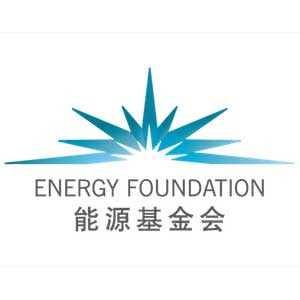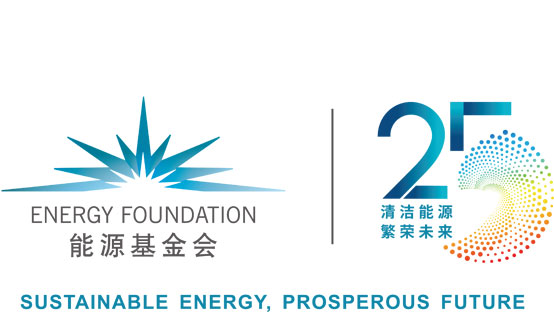Toward Zero Emission Vehicles

“During the few years around the turn of this millennium, the streets of Beijing were filled with yellow taxi vans—locals jokingly likened them to ‘noisy locusts.’ Soon, these tiny boxes on wheels were replaced by red Xiali, mini hatchbacks with Japanese origin, as a staple of taxi fleet in China. Its number kept rising until people would say ‘all under the heaven is red.’ Since then, China’s auto sales had grown at an average rate of more than 20 percent per year, eventually making it the world’s largest auto market,” Gong Huiming, director of the Transportation Program at Energy Foundation China, recalled.
The rapid expansion of China’s economy and its fast-growing auto industry create massive conveniences and comforts for its people with more and more automobiles on the road. But there are also unforeseeable negative consequences, such as a rapid increase in dependence on imported oil and a growing problem of air pollution.
To address these problems while meeting people’s transportation needs, an effective way is to develop vehicles powered by renewables, which will not only greatly reduce vehicle emissions, but also accelerate the low-carbon transformation of the entire transportation sector. And this has been the direction of EF China’s unremitting efforts since early 2000s.
Helping New Energy Vehicles Take Hold in China

In 1997, Toyota launched the world’s first mass-produced electric-gasoline hybrid vehicle Prius, successfully rolling it out in more than 40 markets and taking the world by a “hybrid storm.”
Shortly thereafter, new energy vehicle research in China became the focus of a major national technology project, with attention on hybrid power. In conjunction with the country’s priorities in this area, EF China worked hard to promote the development of hybrid technology, exploring for ways to apply it to public transportation, vehicle rental, and other industries in Beijing and Shenzhen. It also provided support to studies of technical and economic feasibility, and evaluation of potential for energy savings and emission reductions. However, hybrid technology was not a mainstream consideration for the Chinese auto market, despite good evaluation results. This was mainly due to cost issues and the auto industry’s deficiency in the technology.
Since then, the Ministry of Science and Technology (MOST) has taken a lead in cultivating major research projects, and is committed to the development of various types of new energy vehicles, focusing on hydrogen fuel cell vehicles, pure electric vehicles, plug-in hybrid electric vehicles, and methanol vehicles. China used the 2008 Beijing Olympic Games, the 2010 Shanghai World Expo, and other major sporting events as venues for small-scale demonstrations of these technologies. However, these projects never attained economies of scale for commercial releases, with costs remaining high and various technical aspects untested in the market. This showed that while government policies are important, market is the crucial element with regard to promoting rapid deployment of new energy vehicles.
For the period of 2006 to 2010, the Chinese government formulated a strategy on energy-efficient and new energy vehicles, putting related R&D and commercialization on the agenda. In 2009, the MOST, the Ministry of Finance (MOF), the National Development and Reform Commission (NDRC), and the Ministry of Industry and Information Technology (MIIT) jointly launched the Project of Ten Cities and Thousands Vehicles to demonstrate electric cars at the local level. The financially subsidized project sought to initiate deployment in 10 new cities each year for the next three years. Each city would launch 1,000 new energy vehicles, to be used in public transportation, rental, government fleet, sanitation, and postal services, all operated for demonstration purposes. It was widely believed in the industry that this would be a stepping stone linking laboratories and mass market.
Sensing this opportunity, EF China strategically supported the technical assistance organizations behind this project in selecting demonstration cities and carrying out designing works. For this, it raised nearly $500,000. Throughout the years, it also provided support to the China Automotive Technology and Research Center (CATARC) and China Society of Automotive Engineers over their evaluation work of the Ten Cities Project, such as the assessment of the technical feasibility and energy-saving potential of new energy buses in Beijing and Kunming. Based on their evaluation of the projects, they presented a series of analysis findings, such as how to achieve stricter efficiency requirement on braking energy recovery, enhanced battery safety management, better utilization of efficient air conditioning systems, and fast-charging for public vehicles and slow-charging for private vehicles in general. Many of them were later reflected in government policy documents, both at the central and the local levels. By 2012, there were 25 demonstration cities participating in the Ten Cities Project, with a total of 27,400 new energy vehicles in operation as the end of the project approached.

国务院发布《节能与新能源汽车产业发展规划(2012—2020年)》
In the same year, the Chinese State Council issued the Development Plan for the Energy Conservation and New Energy Vehicle Industry (2012–2020). A year later, the MIIT, the MOF, the NDRC, the MOST, and other government agencies issued a policy document to announce China’s decision to continue efforts in this field. As of 2015, 88 cities had launched pilot projects for new energy vehicles, gradually expanding their usage from the public fleet to private consumers at large.
During this process, issues such as charging infrastructure bottleneck, consumer perception and acceptance, and sustainability of financial subsidies had all become increasingly prominent. EF China provided support to the CATARC, Beijing Institute of Technology, Tsinghua University, Beijing Transport Institute, and other institutions in carrying out targeted research on these challenges. Their findings paved the way forward for the official guidelines on vehicle charging infrastructure and improvement of consumer sentiment over electric vehicles.
After the large-scale demonstration projects and heavy promotion between 2009–2015, battery technology made rapid progresses and turned mass production into reality. This led to a rapid decline in the cost of electric vehicles. In the end, China’s new energy vehicle sector gradually moved from its multi-pronged development of various technologies to heavy emphasis on all-electric vehicles, entering into a period of rapid market expansion.
Letting the Market Decide

In order to help the nascent market for new energy vehicles grow, the Chinese government set up special funds to subsidize auto companies and consumers. For example, buyers are exempt from purchase tax while producers of electric vehicles and fuel cell vehicles can receive state subsidies of up to 60,000 and 250,000 RMB ($8,500 and $35,000) per vehicle respectively in the early stage, with even more subsidies for buses.
The cultivating effect of subsidies in the early days was indeed significant, but with rapid growth of the new energy vehicle market, official subsidies gradually became unsustainable, exerting huge pressure on government finances. On the other hand, new energy vehicle companies’ excessive dependence on subsidies stifled innovation. In 2015, analysis supported by EF China suggested that China should change from “universal subsidies” to “targeted subsidies.” For example, a ceiling of total subsidy should be set up and gradually reduced; subsidies should be linked to technical indicators, such as energy efficiency; more subsidies should be used to encourage pioneers and innovators; and important policies need to be released early with a transition period. Shortly thereafter, in April, the MOF issued its policy on financial subsidy for new energy vehicles in the years of 2016–2020, which clearly stated that subsidies would gradually decline and there would be more targeted policies.
At the same time, EF China has been exploring more sustainable and market-based incentives to help China’s new energy vehicle sector develop as financial subsidies get gradually reduced.

Needless to say, China should learn from international experiences in this field. California was once one of the most air polluted areas in the United States with automobile exhaust as an important source of pollution. In 1990, the State introduced the Zero Emission Vehicle (ZEV) credits trading scheme, which mandated the sales ratio of ZEVs and allowed enterprises to purchase credits to meet compliance. This policy pushed carmakers to produce cleaner vehicles, thereby reducing air pollution and carbon emission. It has been proven to be effective and made important contributions to cleaner air and lower carbon emission in California.
As early as 2013, EF China provided support to the Innovation Center for Energy and Transportation on importing the concept of ZEV credits into China and promoted discussion on the feasibility of the policy in China. In 2014, it provided support to the CATARC and the University of California, Davis on holding China’s first international seminar on ZEV credits policy, inviting experts from the California Air Resources Board to give in-depth introduction of plans and experiences. It also lent support to programs in which government heads and experts from the MIIT, the NDRC, and other departments went to the United States to study practices in California. In addition, through UC Davis, the International Council on Clean Transportation, and international experts lead by Dr. Michael Wang of the Argonne National Laboratory, it provided significant support to follow-up policy research.

工信部发布《乘用车企业平均燃料消耗量与新能源汽车积分并行管理办法》
Separately, EF China funded policy studies to provide technical support for ZEV credits in line with China’s conditions, including on how to assign quotas, or coordinate with other policies such as average fuel economy credits for enterprises and carbon markets. In September 2017, the MIIT officially launched the Corporate Average Fuel Consumption and New Energy Vehicle Credits for passenger vehicle enterprises. The system draws on California’s experience with ZEV credits and is tailored to conditions on the ground in China. It combines fuel economy credits with new energy vehicle credits for carmakers. The policy requires the companies to reach a certain level with regard to new energy vehicle credit and allows it to be used as fuel economy credit to meet official requirements. Its ultimate aim is to stimulate the R&D, production, and sales of new energy vehicles.
“Introduction of the double-credits program has made China the first country in the world to implement a ZEV quota system at the national level. It will stabilize the new energy vehicle market, which has been reeling from the gradual loss of subsidies, and promote quality enhancement for vehicles. It is of great significance to establishing a fair and reasonable environment of market competition,” Wu Zhixin, deputy general manager of the CATARC said. “EF China has played an important role in China’s effective learning of the California experience and the development of the double-credits program based on its peculiar national conditions.”
Since the beginning of the Ten Cities Project, China’s new energy vehicle market has seen huge growth, surpassing annual sales volume of 1.25 million units at the end of 2018, with production and sales ranked first in the world for four consecutive years. And a series of more ambitious plans have been introduced in various regions. Hainan Province has taken the lead nationally in announcing that it will gradually ban the sale of fossil-fuel vehicles from March 1, 2019.
“For the next step, we will focus on the zero-emissions transformation of China’s transportation sector by providing meaningful support to projects related to new energy vehicles. The objective ultimately is to make zero-emission transportation a common goal for the entire global community. Therefore, EF China will continue its efforts on ensuring effective implementation of existing new energy vehicle policies, making timely assessment and summarization of China’s experiences, and looking for opportunities for further improvement. Also, we will strengthen our support for comprehensive electrification pilot projects at the local level. Finally, we will fully explore opportunities for an organic integration of large-scale new energy vehicles development with renewable energy, smart grid, urban planning of charging infrastructure, and control of air pollution, so as to promote a smooth marriage of national strategy and local programs,” said Gong Huiming.



